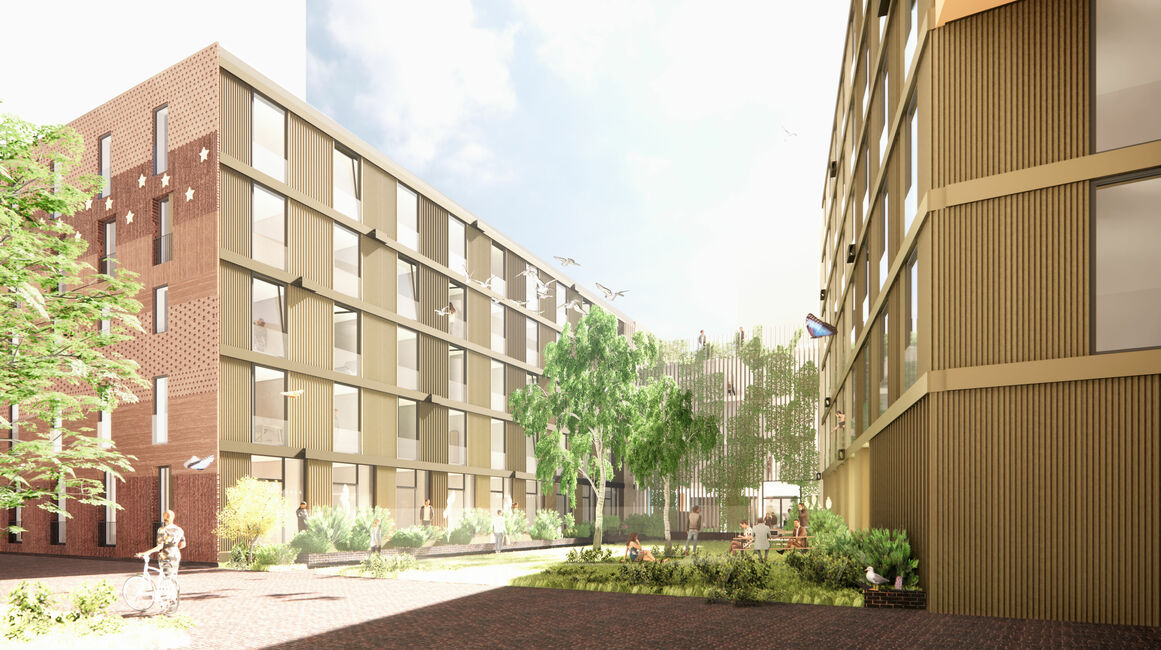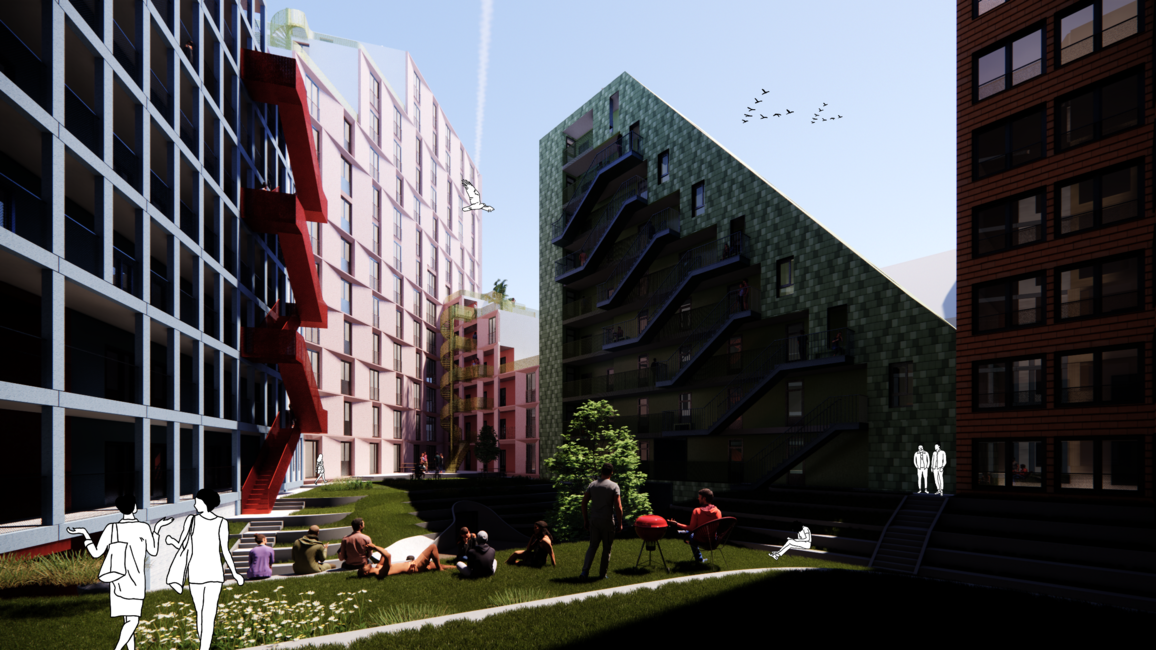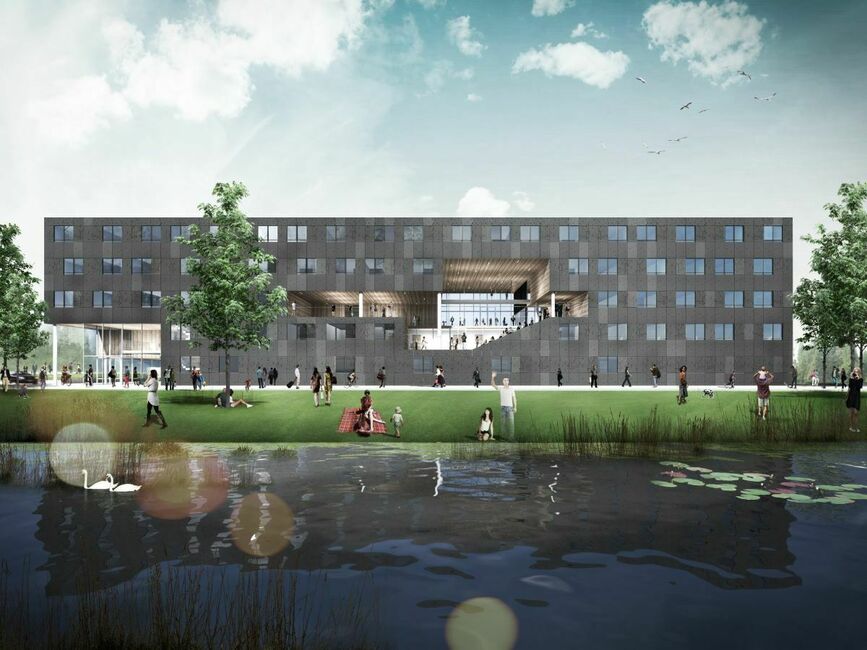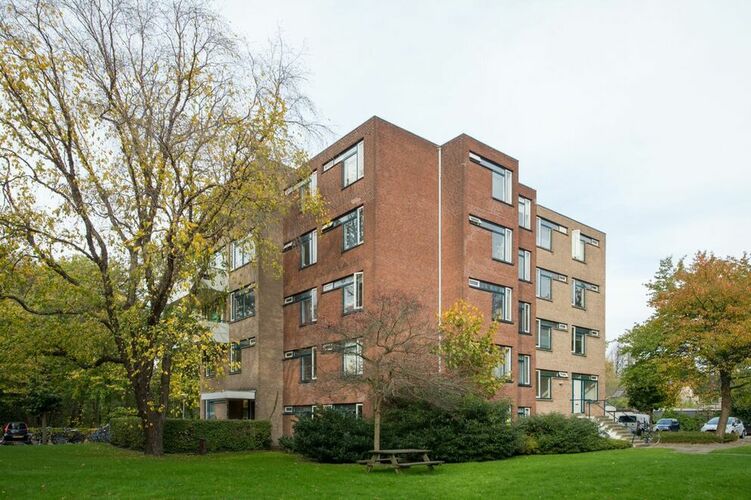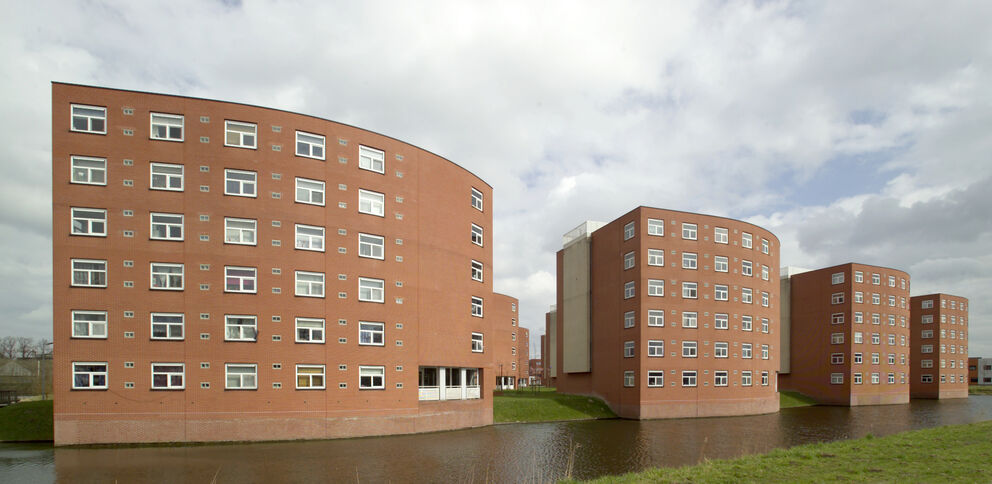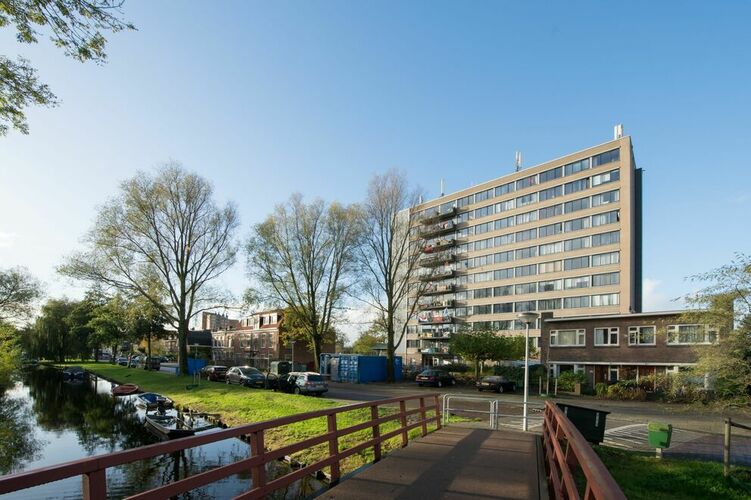DUWO wants to be able to offer every student a fair home. As there is a shortage of affordable student housing in the Netherlands, we invest in new builds. Naturally, we do this as sustainably as possible, which means, first of all, that we ensure that the houses are well insulated and that ventilation is energy efficient. The less energy a house requires, the easier it is to make it energy neutral. The energy that is still required must be capable of being generated 100% sustainably in the long term.
Newly built houses with efficient insulation can be warmed using a source with water heated to a lower temperature (low temperature heating). This makes finding a sustainable solution a lot easier compared to existing buildings. The most appropriate renewable energy solution is chosen for each individual situation. In these cases we always aim to collaborate with local initiatives and parties. Affordability for our tenants plays an important role during the assessment.
If a heat network is nearby or is being built, the preferred option is to connect to this network. Other commonly used technologies are heat pumps and thermal energy storage systems. A thermal energy storage system consists of heat and cold storage. By allowing water to flow through a building in summer, the building is cooled. The heated water is stored in the ground and used for heating the building during winter. If there is sufficient space on the roof, solar panels (electricity generated by the sun) and solar collectors (heat generated by the sun) can be installed.
Making our property more sustainable
By making our extensive existing assets more sustainable, we can significantly reduce both the climate burden and the energy costs for our residents. The government has determined that after 2028 no more homes with energy label E or lower may be rented. But DUWO does not only aim to achieve a good energy label when making its assets more sustainable. When making our home ownership more sustainable, we focus on heating requirements. We strive to make the homes transition-ready. This means that the heat demand of all buildings is reduced so that they are ready for the switch to low temperature heating and connection to a sustainable energy source.
We are already busy making things more sustainable, but we would like to accelerate further. Our property is very diverse and consists of both inner-city monuments and large student complexes with shared facilities on campuses. 2050 still seems far away, but the task is great and time is running out. In addition to the large-scale renovations we carry out, we also make the inhabited state more sustainable in order to accelerate our pace. We do this in parallel in the different cities.
Renovation of larger complexes in an uninhabited state
In large-scale renovations, the sustainability measures are often part of a broader improvement project. In these projects, several scenarios are always weighed against each other. (Partial) demolition-new construction can also be a scenario. Our aim in making the complex more sustainable is to make it transition-ready. This means getting the insulation in order so that the heat demand is reduced. What is possible and what measures are required varies per building.
Because this approach usually provides residents with temporary housing, we immediately look at improvements in the area of community. Is the layout of the home or the form of society still up to date? Or can we improve this immediately? In addition to benefits in terms of comfort and energy costs, the sustainability challenge also offers opportunities for an even more pleasant living situation.
Renovation of smaller buildings, often located in the city center
In addition to larger buildings, DUWO also owns smaller buildings that are in need of renovation. These projects often require an integrated approach not only because of their scale, but also because they often involve older, historic buildings that require a complex and specific approach.
Listed buildings
Sustainability poses a considerable challenge for national historic buildings, due to their status and age. The first national historic building sustainably refurbished by DUWO was Huize de Witte Raaf on the Papengracht in Leiden. The envelope of this student house, which dates from the early 17th century, has been insulated. In addition to double glazing and a collective heat recovery system, solar collectors and hot water storage in a solar boiler have also been installed.
The positive experiences gained from this project were applied during the renovation of Hooigracht 34a and 36, two listed buildings built in1750 and 1901 respectively. Both sustainability and living comfort, community and (fire-)safety were greatly improved. In doing so as much of the cultural historical value as possible was naturally retained. This approach is now also being applied to three larger buildings at De Vliet in Leiden, and buildings in the city centre of Delft.
Making inhabited buildings sustainable
In order to accelerate the sustainability and the transitioning of our existing buildings, and to phase out the E, G, and F labels according to schedule, we also implement sustainability measures in our inhabited buildings. Where necessary, we combine this with required maintenance. We set up a programme for many of our buildings to make sure work is carried out as quickly as possible. The first buildings where such work will begin are Kazernestraat 64-94 in The Hague, Middle Gracht 20 in Leiden and Bagijnhof 9-15 in Delft.
In addition, DUWO carries out regular planned maintenance. During the periods when scheduled renovation takes place, the appropriate sustainability measures are carried out. This is something we never neglect.
